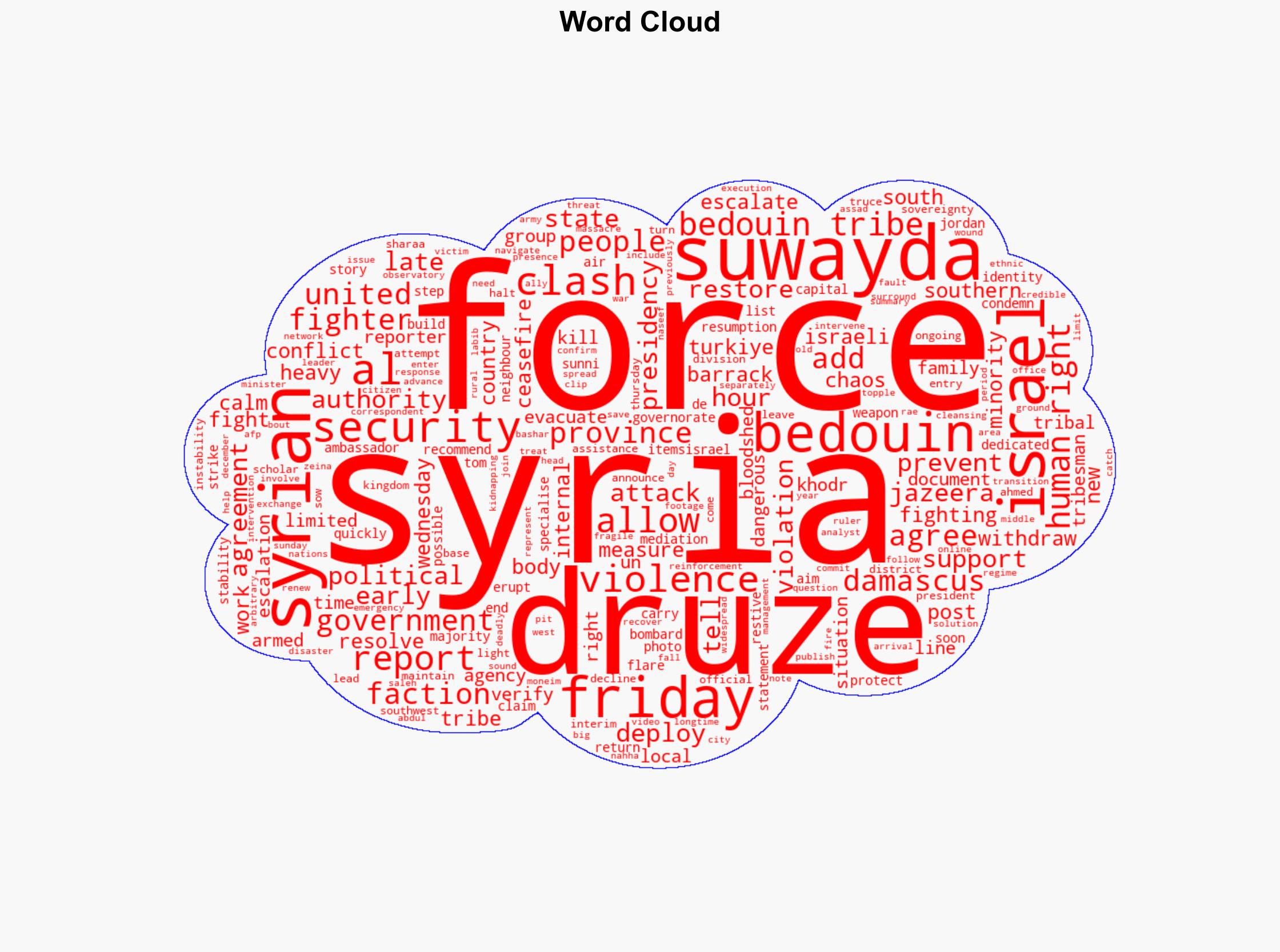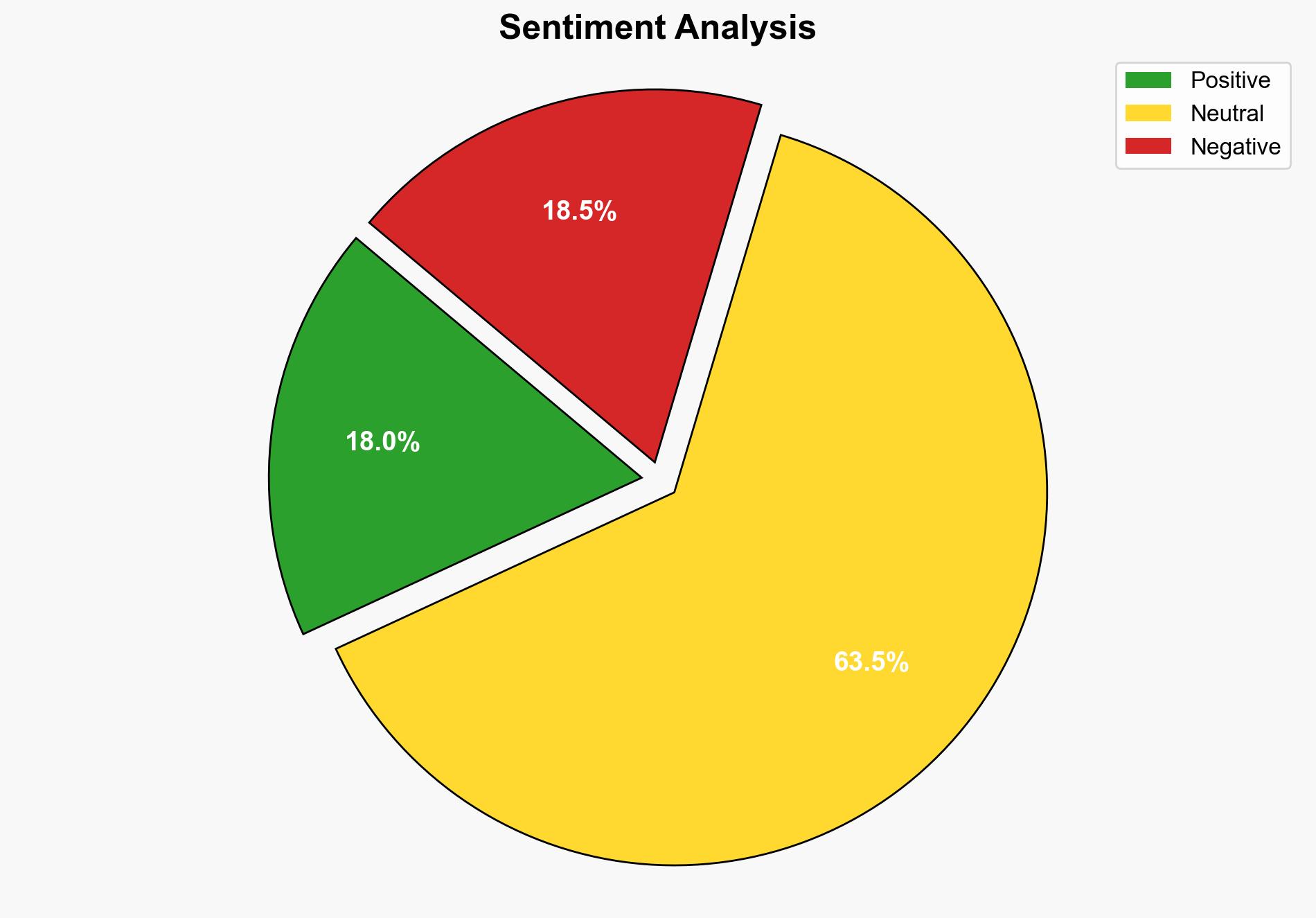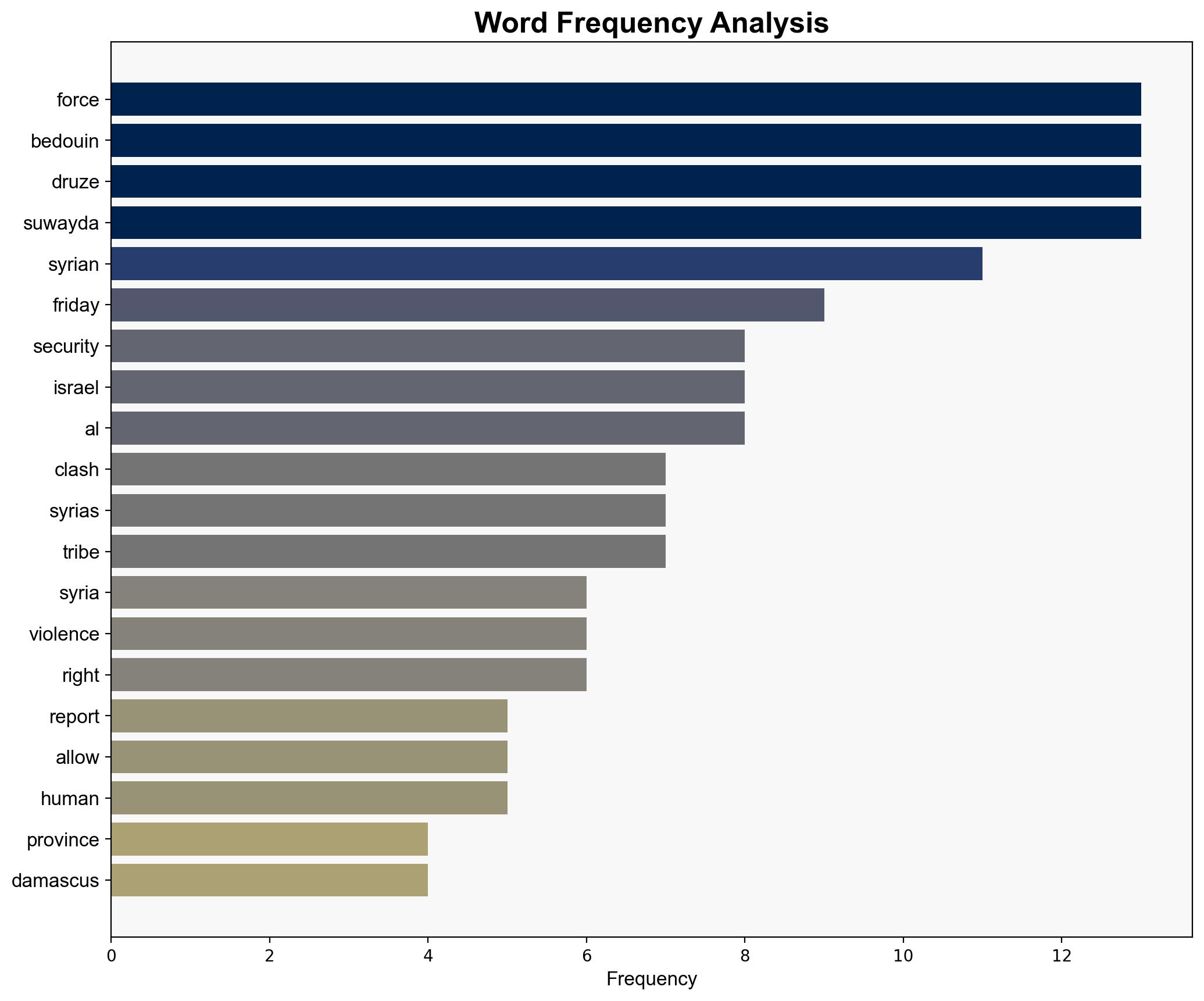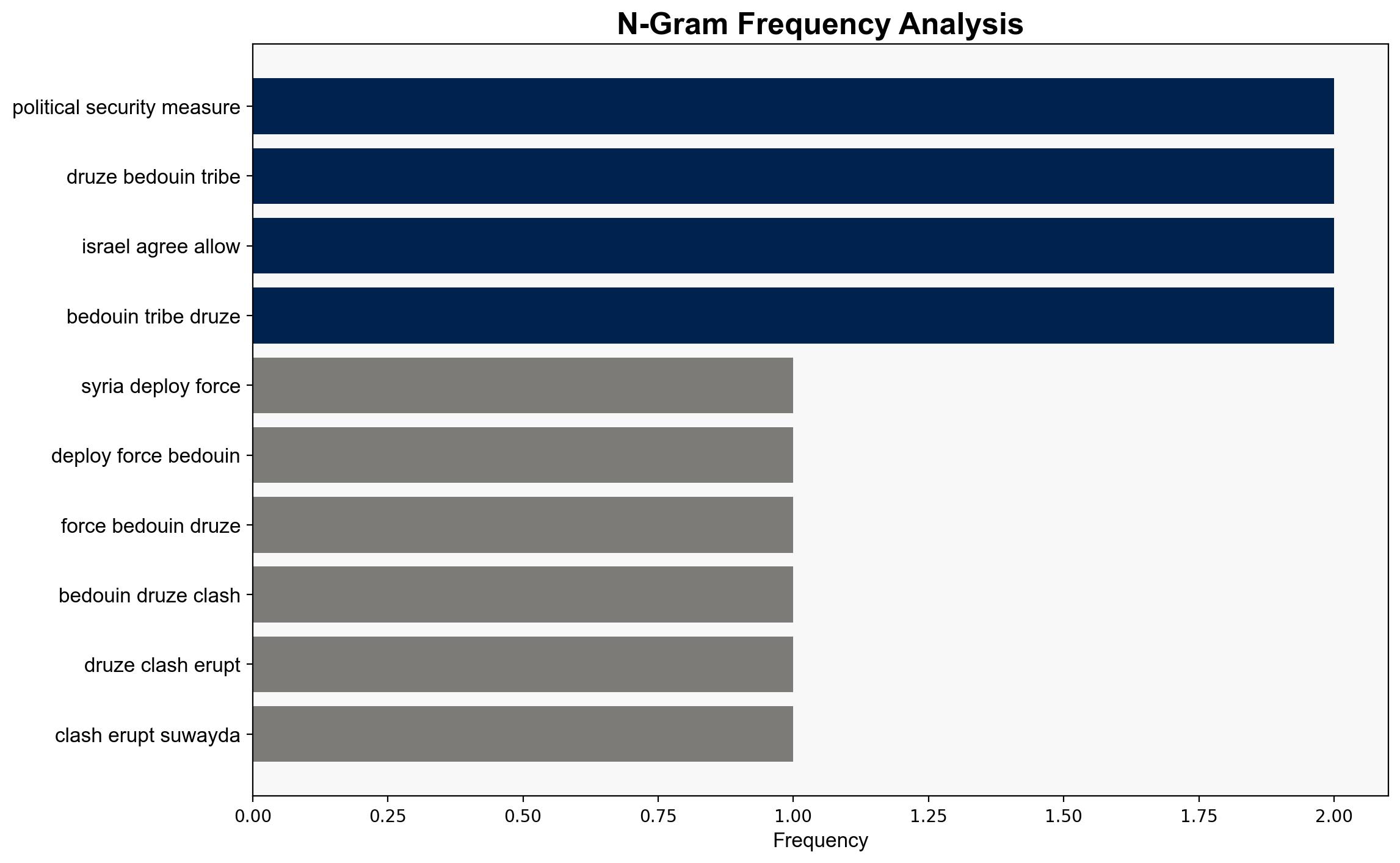Israel reportedly targets Bedouin convoy in Syria after attacks – Al Jazeera English
Published on: 2025-07-18
Intelligence Report: Israel reportedly targets Bedouin convoy in Syria after attacks – Al Jazeera English
1. BLUF (Bottom Line Up Front)
The recent escalation in Syria’s Suwayda province, involving Israeli airstrikes targeting a Bedouin convoy, highlights the fragile security environment in the region. The conflict between Druze and Bedouin communities has intensified, despite a ceasefire agreement. This situation poses significant risks of further destabilization and regional spillover. It is recommended that diplomatic channels be reinforced to prevent further escalation and support humanitarian efforts.
2. Detailed Analysis
The following structured analytic techniques have been applied to ensure methodological consistency:
Cognitive Bias Stress Test
Potential biases were identified in the initial assessments of the conflict’s drivers, particularly regarding the motivations of external actors like Israel. A structured challenge approach was used to reassess these motivations, considering historical patterns of intervention in the region.
Bayesian Scenario Modeling
Probabilistic forecasting suggests a moderate likelihood of continued skirmishes between tribal factions, with a lower probability of a full-scale regional conflict, contingent on international diplomatic interventions.
Network Influence Mapping
The influence of key tribal leaders and external actors, such as Israel and neighboring countries, was mapped to assess their impact on the conflict dynamics. This revealed significant leverage held by tribal leaders in negotiating ceasefires and influencing local security conditions.
3. Implications and Strategic Risks
The ongoing conflict in Suwayda poses several strategic risks, including the potential for increased refugee flows, regional instability, and the empowerment of extremist factions exploiting the chaos. The involvement of external actors like Israel could further complicate the geopolitical landscape, potentially drawing in neighboring countries.
4. Recommendations and Outlook
- Strengthen diplomatic efforts to mediate between conflicting parties and reinforce existing ceasefire agreements.
- Enhance humanitarian aid to affected areas to mitigate civilian suffering and prevent further displacement.
- Scenario Projections:
- Best Case: Successful mediation leads to a lasting ceasefire and gradual stabilization of the region.
- Worst Case: Escalation into a broader regional conflict involving multiple state and non-state actors.
- Most Likely: Continued low-intensity skirmishes with intermittent ceasefires and international diplomatic interventions.
5. Key Individuals and Entities
Abdul Moneim Al Naseef, Ahmed Al Sharaa, Rae Al Saleh, Zeina Khodr, Tom Barrack
6. Thematic Tags
national security threats, regional conflict, humanitarian crisis, geopolitical dynamics





